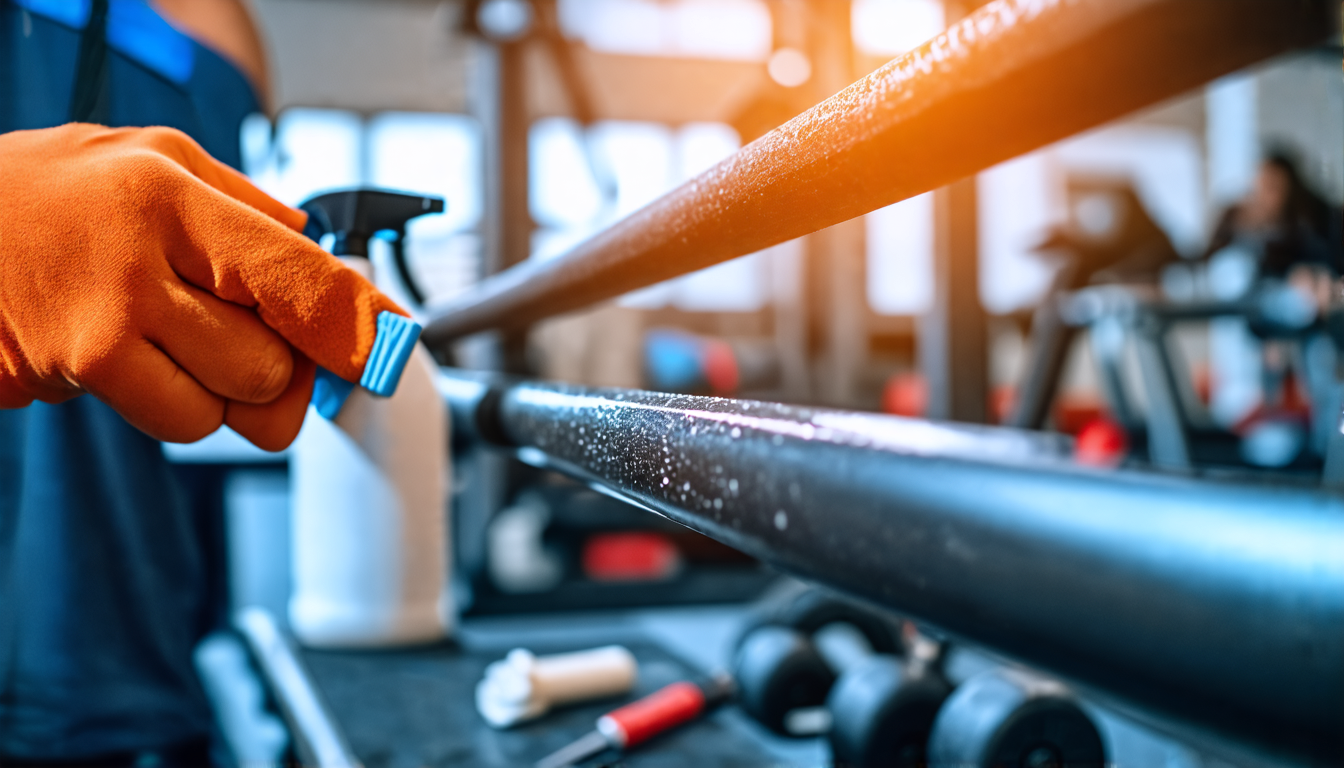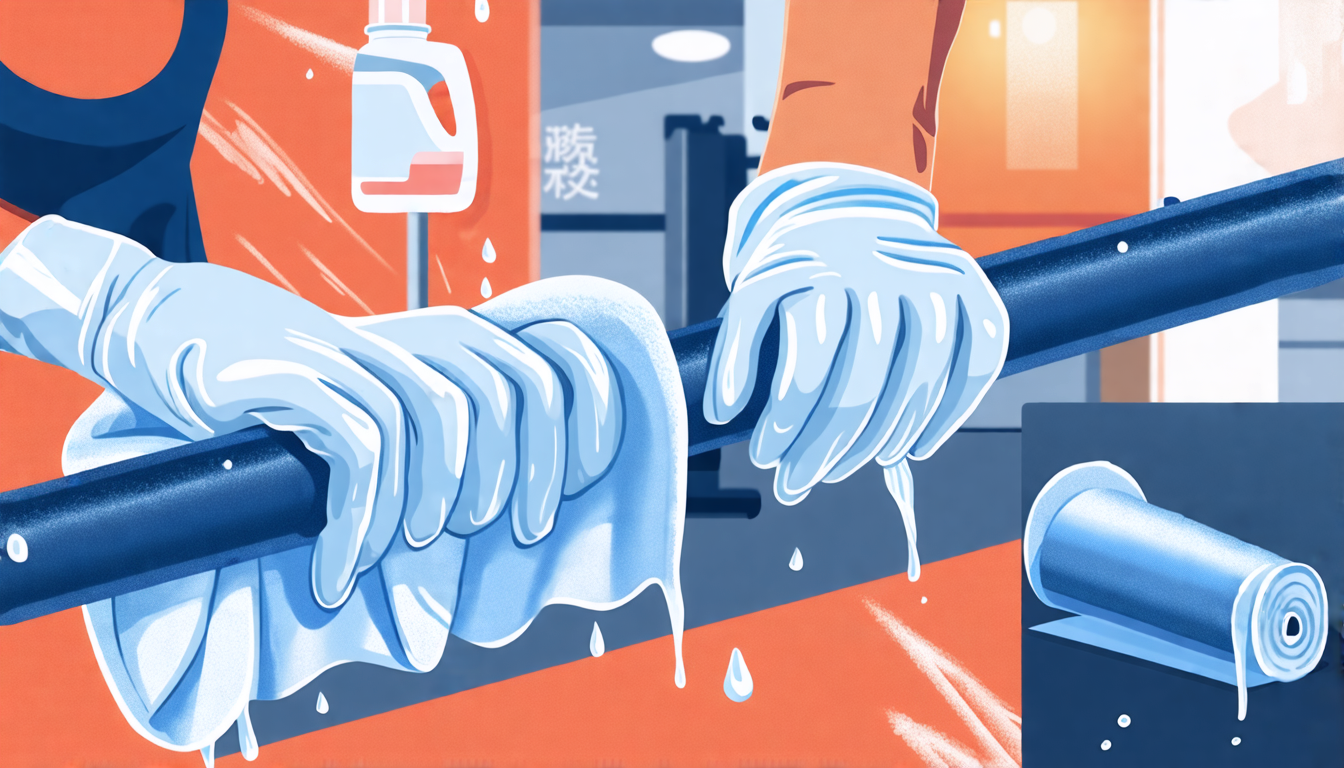When it comes to maintaining your home fitness equipment, cleanliness is crucial—not only for extending the life of your gear but also for ensuring its optimal performance. Among the most essential pieces of your home gym is the fitness bar, often subjected to the rigors of daily use. However, without the proper care, even the most durable fitness bars can succumb to rust, compromising their integrity and effectiveness. To help you keep your fitness bar in top shape, this guide will walk you through the best practices for cleaning and maintaining your equipment. From a detailed step-by-step cleaning process to recommended solutions and tools, you’ll learn everything you need to keep your fitness bar spotless and rust-free. Additionally, we’ll explore preventative measures, including proper storage techniques and regular maintenance tips, so your fitness bar remains a reliable component of your home fitness routine for years to come.
Best Practices for Cleaning Your Fitness Bar
Step-by-Step Cleaning Process
Maintaining a clean and rust-free fitness bar is crucial for prolonging its lifespan and ensuring a safe home workout environment. Follow these steps to clean your fitness bar effectively:
- Remove Chalk and Sweat Residue: Use a nylon brush to scrub away any visible chalk, dirt, or sweat residue from the bar. This helps prevent corrosion and maintains the bar’s grip.
- Wipe Down the Bar: Dampen a microfiber cloth with warm water and wring out excess moisture. Carefully wipe down the entire bar, ensuring you reach all surfaces including knurling and sleeve areas. This helps to remove any remaining debris.
- Use a Cleaning Solution: Apply a mild dish soap or a specially formulated bar cleaning solution to a fresh cloth or sponge. Gently wipe the bar to remove any oily residues, which are often the main culprits behind rust formation.
- Rinse and Dry: Rinse the bar with a new damp cloth to remove any soap residue. Make sure to dry it completely with a clean, dry towel. Moisture is a major cause of rust, so this step is essential.
- Oil the Bar: Apply a thin layer of 3-in-1 oil or a designated barbell oil to the bar using another clean cloth. This helps to protect the metal from rust and keeps the bar functioning smoothly.
Recommended Cleaning Solutions and Tools
Using the right cleaning solutions and tools can make a significant difference in maintaining the condition of your fitness bar. Here are some recommendations:
- Nylon Brush: A nylon brush is ideal for scrubbing the knurling and sleeves without damaging the bar’s finish. It is gentle yet effective at removing buildup.
- Microfiber Cloth: These cloths are great for wiping down the bar as they are absorbent and non-abrasive. They won’t leave behind any scratches or lint.
- Mild Dish Soap: A few drops of mild dish soap mixed with water create a safe cleaning solution for wiping away dirt and oils without harming the bar’s surface.
- Bar Cleaning Solution: There are specialized cleaning solutions available that are formulated specifically for fitness equipment. They often contain ingredients that help prevent rust and maintain the metal’s integrity.
- 3-in-1 Oil: This multi-purpose oil is widely recommended for its protective qualities. It lubricates the bar and provides a strong protective barrier against moisture.
- Designated Barbell or Fitness Equipment Oil: Opt for oils that are specifically designed for barbells and fitness equipment as they usually offer added rust protection and lubrication tailored for these items.
By following these best practices and using the recommended tools and solutions, you can keep your home fitness bar in top condition, ensuring that it remains rust-free and safe for use.

Preventative Measures to Avoid Rust
Your fitness bar is an essential component of your home gym setup, and keeping it in optimal condition ensures better performance, longevity, and safety. One of the critical aspects of maintaining your fitness bar is preventing rust. Here, we’ll discuss the best preventative measures, including proper storage techniques and regular maintenance tips.
Proper Storage Techniques
Storing your fitness bar correctly when it’s not in use can make a significant difference in preventing rust. Here are some key storage techniques to adhere to:
- Keep It in a Dry Place: Moisture is a primary cause of rust. Ensure you store your fitness bar in a location with minimal humidity. Basements and garages, commonly used for home gyms, can sometimes be damp; consider a dehumidifier if this is the case.
- Use Protective Covers: When the fitness bar is not in use, cover it with protective materials such as a barbell sleeve or specialized bar cover. These covers prevent dust and moisture from settling on the bar.
- Avoid Direct Contact with the Floor: Keeping the bar off the floor prevents it from absorbing moisture. Racks designed for barbells are a good investment, ensuring the bar is properly supported and elevated.
- Temperature Control: Extreme temperature changes can cause moisture condensation, leading to rust. Store the fitness bar in an environment where the temperature remains constant.
Regular Maintenance Tips and Tricks
Regular maintenance is crucial when it comes to rust prevention. Implementing a consistent maintenance routine will help keep your fitness bar in great condition. Here are some tips and tricks:
- Frequent Cleaning: After each workout, take a few minutes to wipe down your fitness bar. Sweat and oils from your hands can create a prime environment for rust development. Using a dry cloth or microfiber towel can be very effective.
- Inspect for Wear and Tear: Regularly inspect your fitness bar for any signs of wear, particularly in the knurling or where the bar contacts weight plates and stands. Catching early signs of wear can determine whether your bar needs additional care like oiling or protective coatings.
- Apply a Protective Oil: Use a light coat of 3-in-1 oil or a dedicated barbell oil on the bar’s surface. This protective layer can help prevent moisture from causing rust. Be sure to wipe off any excess oil to avoid a slippery bar during use.
- Brushing the Bar: Use a nylon or brass brush to clean any chalk residue, sweat, or other debris from the knurling. Doing this weekly will maintain the bar’s grip and reduce areas where rust can start.
- Use Anti-Rust Sprays: Consider using anti-rust sprays or treatments specifically designed for fitness equipment. These sprays create a protective barrier against moisture.
- Rotate the Bar: If you have multiple fitness bars, rotate their use. This ensures that one bar doesn’t bear the strain of regular workouts and gives you an opportunity to clean and inspect them regularly.
By implementing these preventative measures and regular maintenance routines, you can significantly extend the life of your fitness bar and keep it in excellent condition. Proper care not only prevents rust but also ensures a safe and effective workout session every time.
In conclusion, maintaining the cleanliness of your fitness bar is crucial not only for its longevity but also to ensure a smooth and safe workout experience. By following a systematic step-by-step cleaning process using recommended cleaning solutions and tools, you can effectively remove sweat, dirt, and other residues that contribute to rust formation. Equally important are preventative measures such as proper storage techniques and regular maintenance. Storing your fitness bar in a dry, climate-controlled environment and routinely inspecting and cleaning it can significantly reduce the risk of rust. By integrating these practices into your home fitness routine, you can keep your equipment in good condition and extend its usability for years to come.

